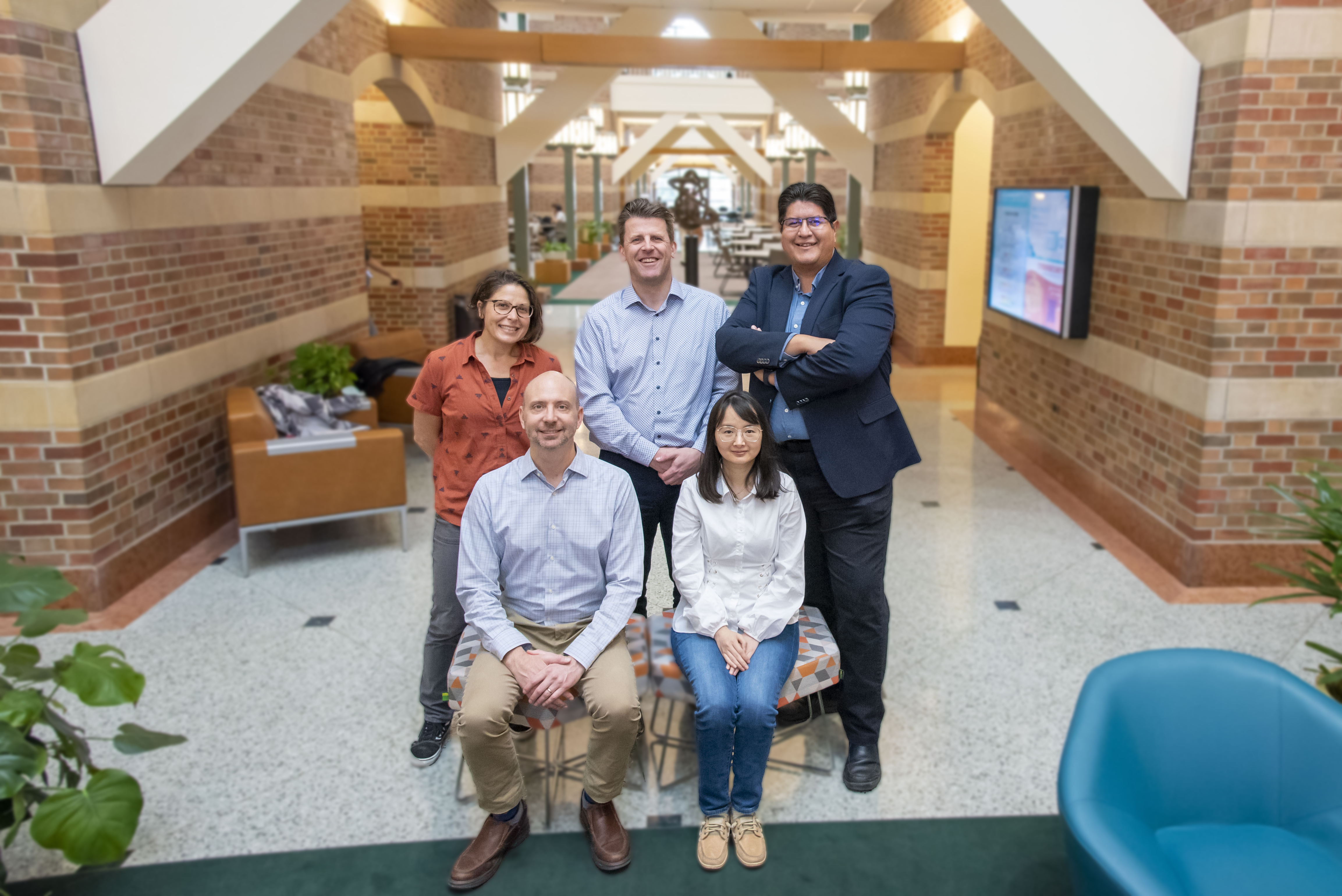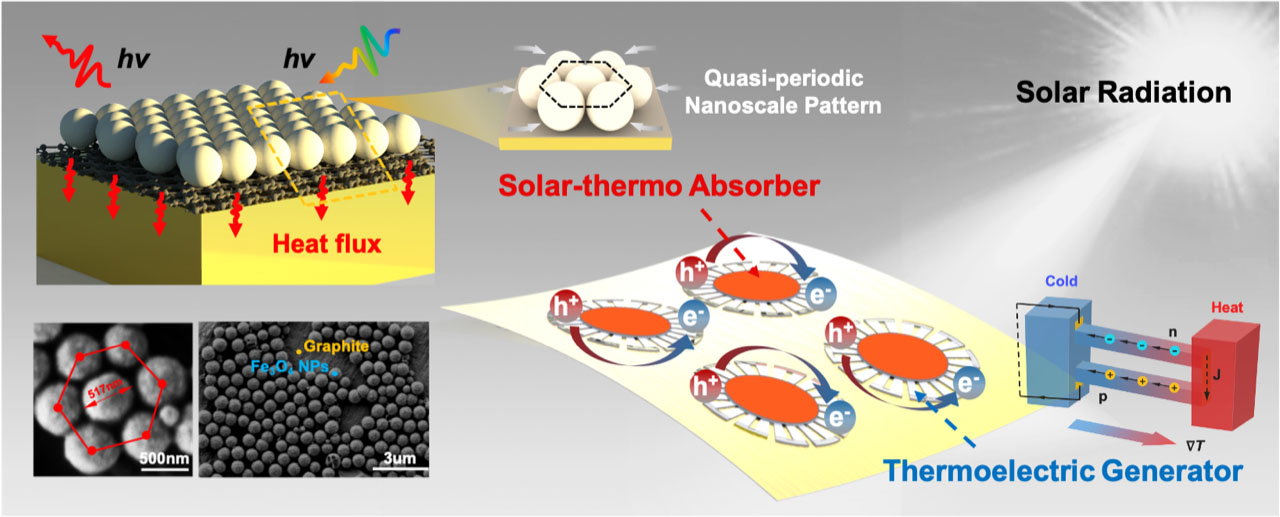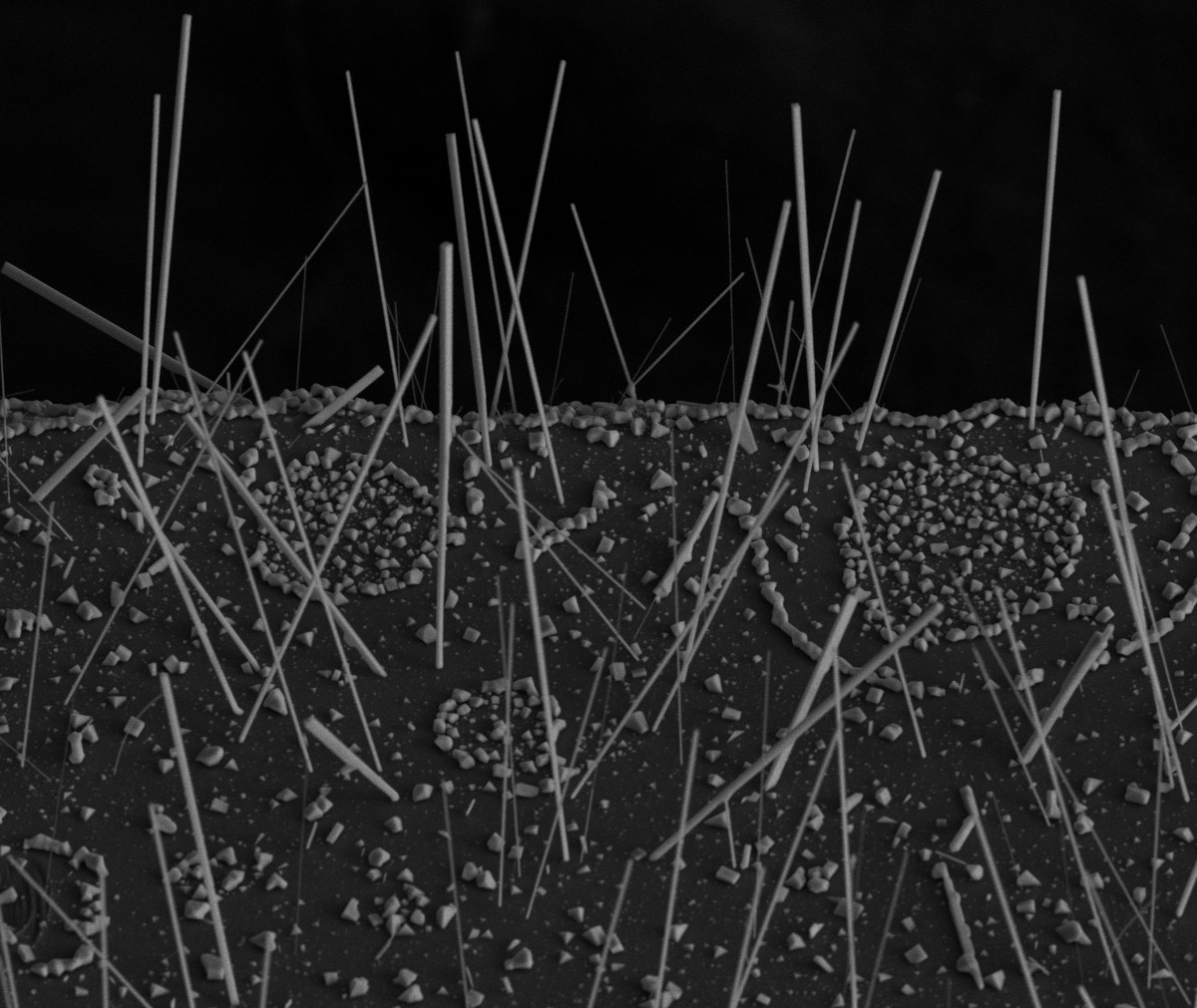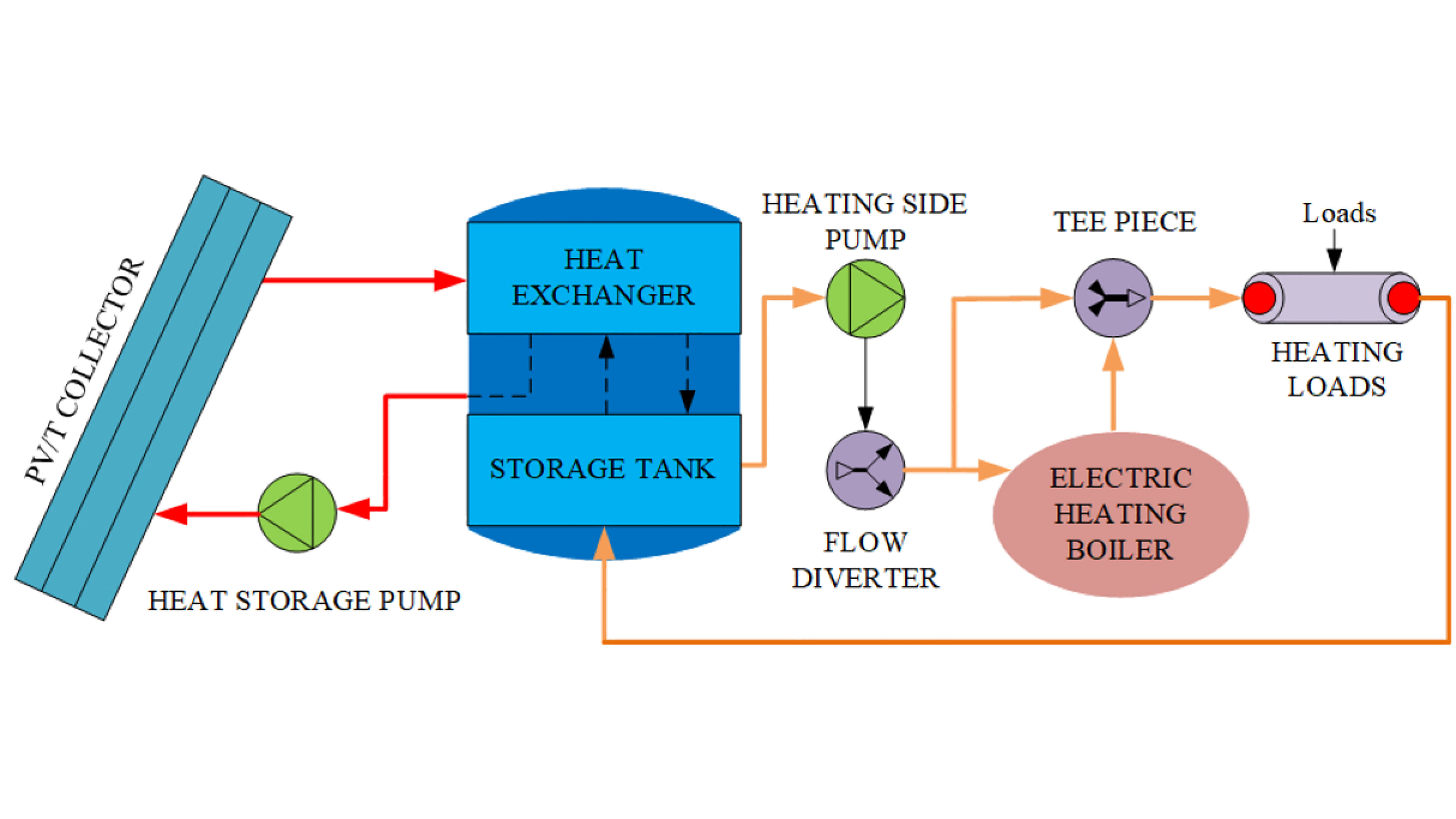Solar energy’s quest for sustainability gets a boost as researchers tackle the lifecycle of perovskite solar cells (PSCs).
Tag: Solar energy
Comprehensive analysis of catalysts, reaction mechanisms, and efficiency factors in photocatalytic nitrate-to-ammonia conversion
Abstract The ammonia industry plays a crucial role in various aspects of human progress and the global economy, particularly in fields such as fertilizers and the production of emerging clean fuels. The Haber-Bosch process, a commercially used method for ammonia…
A multidisciplinary view on agrivoltaics: Future of energy and agriculture
Abstract The increasing global population amplifies the demand for food and energy. Meeting these demands should be a priority and aligned with the Sustainable Development Goals (SDGs). Photovoltaic (PV) systems are one of the key technologies for a sustainable energy…
Carbon emissions and reduction performance of photovoltaic systems in China
Abstract Solar energy is an inexhaustible clean energy, which can be converted into electricity through photovoltaic (PV) modules. However, the production of these modules is a process of pollution, which will generate a large amount of carbon emissions. Therefore, investigating…
Multi-step photovoltaic power forecasting using transformer and recurrent neural networks
Abstract Affordable and clean energy is an important UN sustainable development goal. Solar energy is more difficult to control than fossil fuels, highlighting the need for accurate solar power forecasts. This study develops three variants of the transformer networks, called…
Birth of a new photovoltaic module technology optimised for urban environment
Dr. Seung-il Cha’s electric conversion material R&D team in Korea and Electrotechnology Research Institute (KERI) developed a ‘New photovoltaic module technology’ can perform self-power generation for urban environment.
The sustainability of shrimp aquaculture: An emergy-based case study in the Gulf of Guayaquil thirty years later
Abstract As farmers increase production levels and expand their ponds, the aim of this research is to employ the emergy accounting methodology to assess the sustainability of Ecuadorean shrimp aquaculture in 2021 and compare these results to a previous study…
Strategies toward an effective and sustainable energy transition for Cuba
Abstract This study evaluated the possibilities of energy transition in Cuba 2030. Cuba is currently in a vulnerable energy situation since it strongly depends on the importation of fossil energy. Strategies based on intermittent RES (solar and wind) can reduce…
How does digital economy development affect renewable energy innovation?
Abstract The digital economy has been remarkably fueling the sustainability of renewable energy worldwide. However, how it accelerates renewable energy development, particularly renewable energy innovation, remains unknown. Using a panel of 65 countries from 2002 to 2019, this research applies…
Robust energy storage system for stable in wind and solar
Abstract Energy storage systems (ESS) have become a conspicuous research hotspot since they store power and supply it during peak hours. Existing storage systems must be replaced by advanced energy storage with improved performance, energy management, and a control interface due to…
Sun’s Secrets Unveiled: AI Unlocks New Solar Energy Horizons in China
Researchers have developed an innovative machine learning method to estimate solar radiation components in China without the need for local ground truth data. This breakthrough addresses the scarcity of radiation component data and opens new avenues for the solar energy industry.
Don’t Get Burned: Retina Specialists Share Eclipse Safety Tips
On April 8, 2024, 40 million people across the United States, Canada, and Mexico will have the opportunity to experience a true celestial spectacle, a rare total solar eclipse as the moon passes between the sun and the Earth, blocking daylight for several minutes.
NUS researchers invent new triple-junction tandem solar cells with world-record efficiency
Scientists from the National University of Singapore (NUS) have developed a novel triple-junction perovskite/Si tandem solar cell that can achieve a certified world-record power conversion efficiency of 27.1 per cent across a solar energy absorption area of 1 sq cm, representing the best-performing triple-junction perovskite/Si tandem solar cell thus far. To achieve this, the team engineered a new cyanate-integrated perovskite solar cell that is stable and energy efficient.
Photo battery achieves competitive voltage
Networked intelligent devices and sensors can improve the energy efficiency of consumer products and buildings by monitoring their consumption in real time. Miniature devices like these being developed under the concept of the Internet of Things require energy sources that are as compact as possible in order to function autonomously.
How robots can help find the solar energy of the future
Solar energy is one of the most promising ways to power the world of the future. However, creating more efficient solar cells requires finding new and better materials.

Microdroplets, macro results: Beckman researchers pursue Energy Earthshots
Researchers at the Beckman Institute will conduct electrochemical reactions in microdroplets to produce clean hydrogen, sequester carbon dioxide, and store renewable energies like wind and solar inexpensively and sustainably. Their project, called DROPLETS, received $4.5 million from the U.S. Department of Energy’s Office of Science through its Energy Earthshots Initiative.
Solar farms in space are possible, say Surrey and Swansea
It’s viable to produce low-cost, lightweight solar panels that can generate energy in space, according to new research.
Revolutionizing color technology and solar energy
Case Western Reserve physics professor Giuseppe Strangi is leading a research group developing new optical coatings, which are as thin as a few atomic layers. They can simultaneously transmit and reflect narrow-banded light with unparalleled vividness and purity of the colors.
The potential of solar cars in the world
A new study, modeling the potential of solar-powered vehicles in the urban context in 100 cities across the world, shows that solar energy provides a range between 11 and 29 km per day, reducing charging needs by half.
Copper-doped tungstic acid nanocrystals transform infrared light conversion
Systematic copper doping boosts all-solar utilization in tungstic acid nanocrystals.
Floating sea farms: a solution to feed the world and ensure freshwater by 2050
The sun and the sea – both abundant and free – are being harnessed in a unique project to create vertical sea farms floating on the ocean that can produce fresh water for drinking and agriculture.
Solar powered irrigation: a game-changer for small-scale farms in sub-Saharan Africa
A new study, published in Environmental Research Letters, finds that standalone solar photovoltaic irrigation systems have the potential to meet more than a third of the water needs for crops in small-scale farms across sub-Saharan Africa.
Can floating solar panels be a sustainable energy solution in New York?
Steve Grodsky, assistant professor of natural resources, and a multidisciplinary team of researchers, soon will learn how solar panels placed on top of water bodies can affect the biology of aquatic systems.
MSU scientists help discover the highest-energy light coming from the sun
Mehr Un Nisa, a postdoctoral research associate at Michigan State University, who will soon be joining MSU’s faculty, is the corresponding author of a new paper in the journal Physical Review Letters that details the discovery of the highest-energy light ever observed from the sun.
Renewable solar energy can help purify water, the environment
Using electrochemistry to separate different particles within a solution (also known as electrochemical separation) is an energy-efficient strategy for environmental and water remediation: the process of purifying contaminated water.
Novel solar desalination system for remote areas
With summer temperatures soaring, the spectre of water scarcity looms large. As a possible solution to increase the availability of clean, potable water, researchers at the Indian Institute of Science (IISc) have developed a novel thermal desalination system which can work using solar energy.
Chemists Unravel Reaction Mechanism for Clean Energy Catalyst
Chemists at the University of Kansas and Brookhaven National Laboratory have unraveled the entire reaction mechanism for a key class of water-splitting catalysts. Their work could help pure hydrogen be produced from renewable energy sources such as solar power.

GW Expert Available: Lawmakers vote to repeal President Biden’s suspension of solar tariffs
On Wednesday, Senate lawmakers voted to overturn President Joe Biden’s two-year suspension of tariffs on solar imports from countries in Southeast Asia, according to The Hill. The measure has already been approved by the House. The White House has said President Biden…
Perovskite solar cells’ instability must be addressed for global adoption, say Surrey researchers
Mass adoption of perovskite solar cells will never be commercially viable unless the technology overcomes several key challenges, according to researchers from the University of Surrey.
A solar hydrogen system that co-generates heat and oxygen
A parabolic dish on the EPFL campus is easily overlooked, resembling a satellite dish or other telecommunications infrastructure.
Tax credits for green energy not always a net plus for climate
The Biden administration is deciding how much American-made equipment to require in renewable energy projects in order to qualify for tax credits — prompting disputes between energy developers and product manufacturers. Fengqi You is a professor of energy systems engineering…
Perovskite solar cells from the slot die coater – a step towards industrial production
Metal halide perovskites are considered to be a particularly low-cost and promising class of materials for next-generation solar modules. Perovskite solar cells can be produced with coating processes using liquid inks made from precursor materials and various solvents.

Nanoparticles Self-Assemble to Harvest Solar Energy
In APL Photonics, researchers design a solar harvester with enhanced energy conversion capabilities. The device employs a quasiperiodic nanoscale pattern, meaning most of it is an alternating and consistent pattern, while the remaining portion contains random defects that do not affect its performance. The fabrication process makes use of self-assembling nanoparticles, which form an organized material structure based on their interactions with nearby particles without any external instructions. Thermal energy harvested by the device can be transformed to electricity using thermoelectric materials.
Harnessing Plant Molecules to Harvest Solar Energy
ROCKVILLE, MD – Our current solar panels aren’t very efficient; they are only able to convert up to about 20 percent of the sun’s energy into electricity. As a result, to generate a lot of electricity, the panels require a lot of space—sometimes leading forests to be cut down or farms to be replaced by solar.
Physicists solve durability issue in next-generation solar cells
Physicists in the U.S. jumped a major hurdle standing in the way of the commercialization of solar cells created with halide perovskites as a lower-cost, higher-efficiency replacement for silicon when generating electricity from the sun.
Research Reveals Thermal Instability of Solar Cells but Offers a Bright Path Forward
A new type of solar technology has seemed promising in recent years. Halide perovskite solar cells are both high performing and low cost for producing electrical energy – two necessary ingredients for any successful solar technology of the future. But new solar cell materials should also match the stability of silicon-based solar cells, which boast more than 25 years of reliability.
Team develops strategy to regulate light absorption behaviors of titanium oxo clusters
A research team has improved the solar energy absorption of titanium oxo clusters. Their work demonstrates an effective strategy for regulating the light absorption behaviors of these clusters by importing electron-rich heterometals.
Producing ‘green’ energy — literally — from living plant ‘bio-solar cells’
By collecting electrons naturally transported within plant cells, scientists can generate electricity. Now, researchers reporting in ACS Applied Materials & Interfaces have, for the first time, used a succulent plant to create a living “bio-solar cell” that runs on photosynthesis.
Simple semiconductor solutions could boost solar energy generation and enable better space probes
A ‘simple’ tweak to perovskite solar cells during the fabrication stage could help to unlock the untold potential of the renewable energy source, claims research from the University of Surrey.
Jenny Nelson named Fred Kavli Distinguished Lecturer in Materials Science at 2022 MRS Fall Meeting & Exhibit
WARRENDALE, PA—The Materials Research Society (MRS) announced that Jenny Nelson, Imperial College London, has been selected for the Fred Kavli Distinguished Lectureship in Materials Science for the 2022 MRS Fall Meeting & Exhibit in Boston, Massachusetts. Nelson was selected by the 2022 MRS Fall Meeting Chairs.
Solar Park 2.0: Higher Yield on the Same Area
Shade, dirt, or aging considerably reduce the yield of large photovoltaic facilities. Karlsruhe Institute of Technology (KIT) and partners from science and industry have now launched the Solar Park 2.0 project to reduce these losses.
Climate Change Consensus Endures in Florida
Seven sequenced surveys since October 2019 paint a comprehensive picture of Floridians’ climate resilience attitudes during a period of particularly dynamic political, economic and environmental events. Climate change has emerged as an abiding and cross-cutting issue in Florida.
Casting Shadows on Solar Cells Connected in Series
Even small objects, such as dust and leaves, can block sunlight from reaching solar cells, and understanding how the loss of incoming radiation affects power output is essential for optimizing photovoltaic technology. In the Journal of Renewable and Sustainable Energy, researchers explore how different shade conditions impact performance of single solar cells and two-cell systems connected in series and parallel. They found that the decrease in output current of a single cell or two cells connected in parallel was nearly identical to the ratio of shade to sunlight. However, for two cells running in series, there was excess power loss.

Scientists Grow Lead-Free Solar Material With a Built-In Switch
A lead-free solar material developed by Berkeley Lab scientists offers a simpler and more sustainable approach to solar cell manufacturing. The advance could also benefit halide perovskites, a promising solar technology that requires much less energy to manufacture than silicon.
Floating ‘artificial leaves’ ride the wave of clean fuel production
Researchers have developed floating ‘artificial leaves’ that generate clean fuels from sunlight and water, and could eventually operate on a large scale at sea.
Excitons Need Space to Separate: Free Carrier Production in Organic Solar Cells
New investigations have produced a simpler model to elegantly explain previously observed behaviors for free carrier generation in organic solar cells. The model relies on well-established scientific descriptors, Marcus theory and entropy. Previous descriptions proposed new physical phenomena, but a new, simplified model provides a unified platform for understanding processes in both solution and solid-phase systems for organic photochemical conversion.
Power Up: New Polymer Property Could Boost Accessible Solar Power
Lightweight as a window cling and replicable as a newspaper, organic solar cells are emerging as a viable solution for the nation’s growing energy demand.

Solar-Biomass Hybrid System Satisfies Home Heating Requirements in Winter
In Journal of Renewable and Sustainable Energy, researchers in China and the United States outline a computer simulation model addressing the challenge of solar power’s inherent intermittency by adding biomass as another renewable energy source to advance a reliable, affordable heating solution while reducing carbon dioxide emissions. The proposed solar-biomass hybrid system is based on distributed multi-generation technology that integrates photovoltaic-thermal and biomass power sources.
Chula’s Own Solar Cell Project High-powered and Diverse Formats that Meet World Standards
Chula’s researchers have garnered themselves a world-class reward for their latest solar cell project which increases the capacity of electricity production and can be applied to numerous types of merchandise. These new solar cells are guaranteed to meet international standards and develop clean energy for society.
Secret to treating ‘Achilles’ heel’ of alternatives to silicon solar panels revealed
A team of researchers from the UK and Japan has found that the tiny defects which limit the efficiency of perovskites – cheaper alternative materials for solar cells – are also responsible for structural changes in the material that lead to degradation.